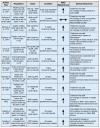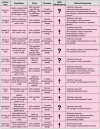Dietary Supplementation With NAD+-Boosting Compounds in Humans: Current Knowledge and Future Directions
- PMID: 37068054
- PMCID: PMC10692436
- DOI: 10.1093/gerona/glad106
Dietary Supplementation With NAD+-Boosting Compounds in Humans: Current Knowledge and Future Directions
Abstract
Advancing age and many disease states are associated with declines in nicotinamide adenine dinucleotide (NAD+) levels. Preclinical studies suggest that boosting NAD+ abundance with precursor compounds, such as nicotinamide riboside or nicotinamide mononucleotide, has profound effects on physiological function in models of aging and disease. Translation of these compounds for oral supplementation in humans has been increasingly studied within the last 10 years; however, the clinical evidence that raising NAD+ concentrations can improve physiological function is unclear. The goal of this review was to synthesize the published literature on the effects of chronic oral supplementation with NAD+ precursors on healthy aging and age-related chronic diseases. We identified nicotinamide riboside, nicotinamide riboside co-administered with pterostilbene, and nicotinamide mononucleotide as the most common candidates in investigations of NAD+-boosting compounds for improving physiological function in humans. Studies have been performed in generally healthy midlife and older adults, adults with cardiometabolic disease risk factors such as overweight and obesity, and numerous patient populations. Supplementation with these compounds is safe, tolerable, and can increase the abundance of NAD+ and related metabolites in multiple tissues. Dosing regimens and study durations vary greatly across interventions, and small sample sizes limit data interpretation of physiological outcomes. Limitations are identified and future research directions are suggested to further our understanding of the potential efficacy of NAD+-boosting compounds for improving physiological function and extending human health span.
Keywords: Clinical trials; Nicotinamide riboside; Nutrition; Physiology; Successful aging.
© The Author(s) 2023. Published by Oxford University Press on behalf of The Gerontological Society of America. All rights reserved. For permissions, please e-mail: journals.permissions@oup.com.
Conflict of interest statement
The authors have a material transfer agreement with the Chromadex External Research Program to receive the compound nicotinamide riboside for study purposes. The authors declare no commercial or financial relationships that could be viewed as conflicts of interest.
Figures





Similar articles
-
Safety and efficacy of long-term nicotinamide mononucleotide supplementation on metabolism, sleep, and nicotinamide adenine dinucleotide biosynthesis in healthy, middle-aged Japanese men.Endocr J. 2024 Feb 28;71(2):153-169. doi: 10.1507/endocrj.EJ23-0431. Epub 2024 Jan 6. Endocr J. 2024. PMID: 38191197
-
The therapeutic perspective of NAD+ precursors in age-related diseases.Biochem Biophys Res Commun. 2024 Apr 2;702:149590. doi: 10.1016/j.bbrc.2024.149590. Epub 2024 Feb 2. Biochem Biophys Res Commun. 2024. PMID: 38340651 Review.
-
NAD+ Therapeutics and Skeletal Muscle Adaptation to Exercise in Humans.Sports Med. 2022 Dec;52(Suppl 1):91-99. doi: 10.1007/s40279-022-01772-2. Epub 2022 Nov 4. Sports Med. 2022. PMID: 36331703 Free PMC article. Review.
-
MIB-626, an Oral Formulation of a Microcrystalline Unique Polymorph of β-Nicotinamide Mononucleotide, Increases Circulating Nicotinamide Adenine Dinucleotide and its Metabolome in Middle-Aged and Older Adults.J Gerontol A Biol Sci Med Sci. 2023 Jan 26;78(1):90-96. doi: 10.1093/gerona/glac049. J Gerontol A Biol Sci Med Sci. 2023. PMID: 35182418 Clinical Trial.
-
A Narrative Review of Nicotinamide Adenine Dinucleotide (NAD)+ Intermediates Nicotinamide Riboside and Nicotinamide Mononucleotide for Keratinocyte Carcinoma Risk Reduction.J Drugs Dermatol. 2022 Oct 1;21(10):1129-1132. doi: 10.36849/JDD.6870. J Drugs Dermatol. 2022. PMID: 36219044 Review.
Cited by
-
Multiplexed Targeted Spatial Mass Spectrometry Imaging Assays to monitor lipids and NAD+ metabolites in CD38 knockout mice exhibiting improved metabolism.Res Sq [Preprint]. 2025 Jun 16:rs.3.rs-6743284. doi: 10.21203/rs.3.rs-6743284/v1. Res Sq. 2025. PMID: 40585256 Free PMC article. Preprint.
-
The role of nicotinamide adenine dinucleotide salvage enzymes in cardioprotection.Kardiochir Torakochirurgia Pol. 2024 Jun;21(2):86-95. doi: 10.5114/kitp.2024.141145. Epub 2024 Jun 30. Kardiochir Torakochirurgia Pol. 2024. PMID: 39055245 Free PMC article. Review.
-
NAD+ Precursors: A Physiological Reboot?Nutrients. 2023 Oct 23;15(20):4479. doi: 10.3390/nu15204479. Nutrients. 2023. PMID: 37892554 Free PMC article.
-
Acute nicotinamide riboside supplementation increases human cerebral NAD+ levels in vivo.Magn Reson Med. 2024 Dec;92(6):2284-2293. doi: 10.1002/mrm.30227. Epub 2024 Jul 23. Magn Reson Med. 2024. PMID: 39044608
-
Nicotinamide: A Multifaceted Molecule in Skin Health and Beyond.Medicina (Kaunas). 2025 Feb 1;61(2):254. doi: 10.3390/medicina61020254. Medicina (Kaunas). 2025. PMID: 40005371 Free PMC article. Review.

